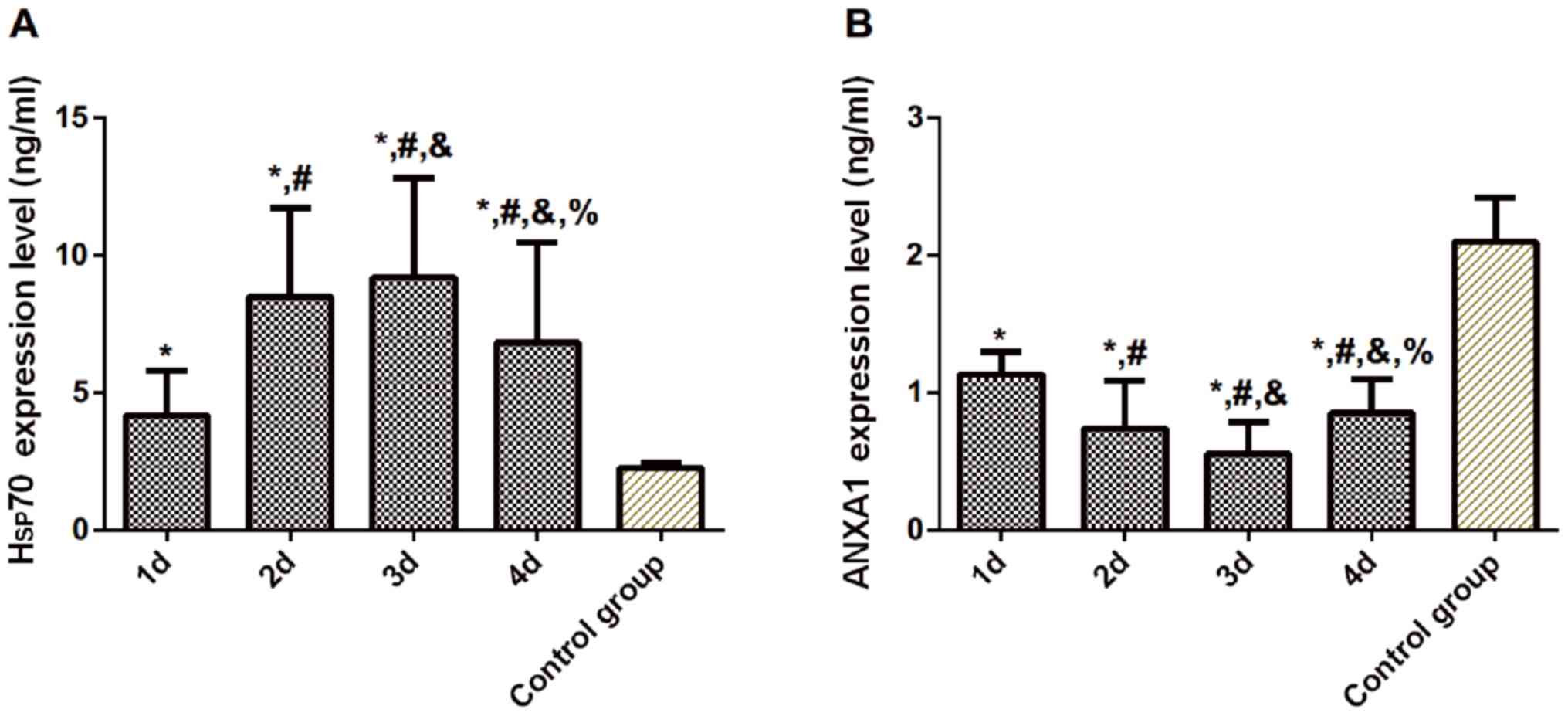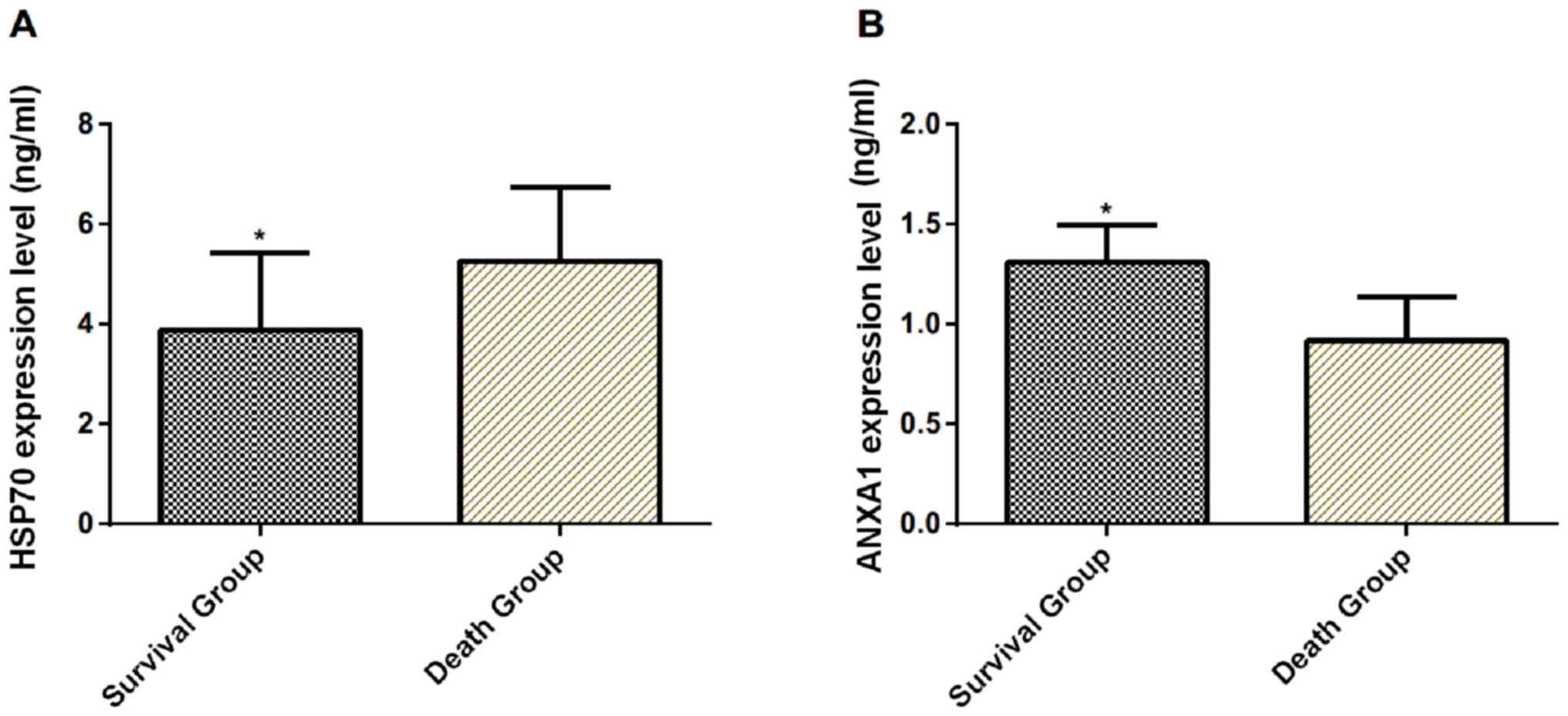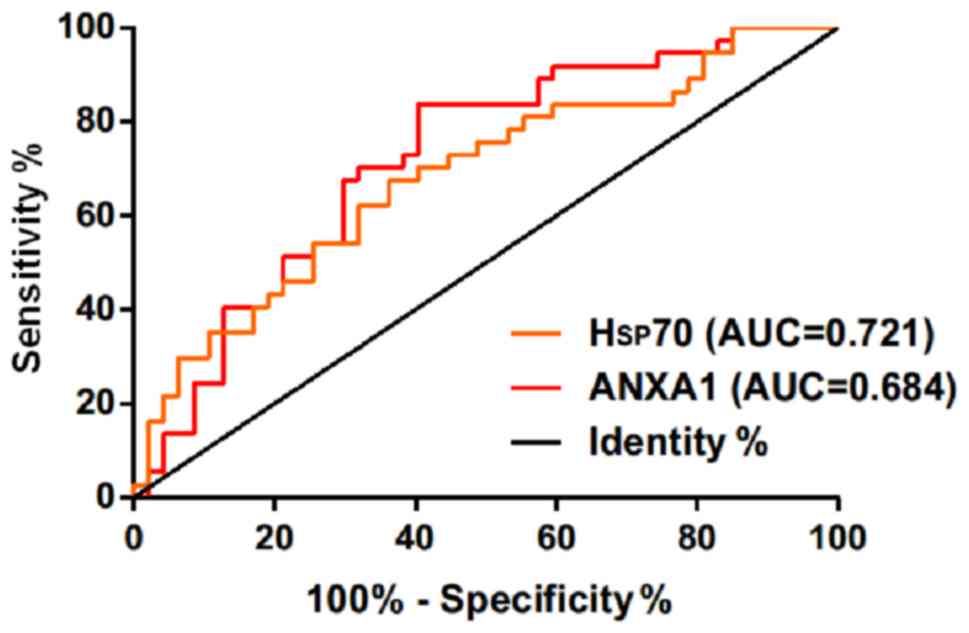|
1
|
Sun Z, Zuo H, Yuan D, Sun Y, Zhang K, Cui
Z and Wang J: Predictors of prognosis in patients with temporal
lobe epilepsy after anterior temporal lobectomy. Exp Ther Med.
10:1896–1902. 2015. View Article : Google Scholar : PubMed/NCBI
|
|
2
|
Memarian N, Kim S, Dewar S, Engel J Jr and
Staba RJ: Multimodal data and machine learning for surgery outcome
prediction in complicated cases of mesial temporal lobe epilepsy.
Comput Biol Med. 64:67–78. 2015. View Article : Google Scholar : PubMed/NCBI
|
|
3
|
Chen F, Xu C and Zhang C: Effect of
indwelling nasointestinal tube for enteral nutrition support in
patients with severe craniocerebral trauma undergoing mechanical
ventilation. Zhonghua Wei Zhong Bing Ji Jiu Yi Xue. 30:57–60.
2018.(In Chinese). PubMed/NCBI
|
|
4
|
Xu G, Hu B, Chen G, Yu X, Luo J, Lv J and
Gu J: Analysis of blood trace elements and biochemical indexes
levels in severe craniocerebral trauma adults with Glasgow Coma
Scale and injury severity score. Biol Trace Elem Res. 164:192–197.
2015. View Article : Google Scholar : PubMed/NCBI
|
|
5
|
Benjamin IJ and McMillan DR: Stress (heat
shock) proteins: Molecular chaperones in cardiovascular biology and
disease. Circ Res. 83:117–132. 1998. View Article : Google Scholar : PubMed/NCBI
|
|
6
|
Wang T, Yu DR, Huang J, Liu Q, Wang DX,
Luo N, Jia H, Fan HF and Liu QB: Multimodal rehabilitation program
promotes motor function recovery of rats after ischemic stroke by
upregulating expressions of GAP-43, SYN, HSP70, and C-MYC. J Stroke
Cerebrovasc Dis. 27:2829–2839. 2018. View Article : Google Scholar : PubMed/NCBI
|
|
7
|
Yurinskaya MM, Funikov SY, Evgen'ev MB and
Vinokurov MG: Exogenous heat shock protein HSP70 reduces response
of human neuroblastoma cells to lipopolysaccharide. Dokl Biochem
Biophys. 469:239–243. 2016. View Article : Google Scholar : PubMed/NCBI
|
|
8
|
Cheng CY, Kao ST and Lee YC: Ferulic acid
exerts anti-apoptotic effects against ischemic injury by activating
HSP70/Bcl-2- and HSP70/autophagy-mediated signaling after permanent
focal cerebral ischemia in rats. Am J Chin Med. 47:39–61. 2019.
View Article : Google Scholar : PubMed/NCBI
|
|
9
|
Zhou Y, Niu LJ, Qi FM and Guo L: Effect of
3-n-butylphthalide pretreatment on expression of the HSP70 after
brain ischemia/reperfusion. Zhongguo Ying Yong Sheng Li Xue Za Zhi.
31:136–140. 2015.(In Chinese). PubMed/NCBI
|
|
10
|
Grewal T, Wason SJ, Enrich C and Rentero
C: Annexins - insights from knockout mice. Biol Chem.
397:1031–1053. 2016. View Article : Google Scholar : PubMed/NCBI
|
|
11
|
Cristante E, McArthur S, Mauro C, Maggioli
E, Romero IA, Wylezinska-Arridge M, Couraud PO, Lopez-Tremoleda J,
Christian HC, Weksler BB, et al: Identification of an essential
endogenous regulator of blood-brain barrier integrity, and its
pathological and therapeutic implications. Proc Natl Acad Sci USA.
110:832–841. 2013. View Article : Google Scholar : PubMed/NCBI
|
|
12
|
Xiong J and Feng Y: Effect of
dl-3-N-butylphthalide on the expression of hsp70 mRNA and c-fos in
transient cerebral ischemic and reperfused rat brain. Yao Xue Xue
Bao. 33:401–406. 1998.(In Chinese). PubMed/NCBI
|
|
13
|
Brennan PM, Murray GD and Teasdale GM:
Simplifying the use of prognostic information in traumatic brain
injury. Part 1: The GCS-Pupils score: An extended index of clinical
severity. J Neurosurg. 128:1612–1620. 2018. View Article : Google Scholar : PubMed/NCBI
|
|
14
|
Godinjak A, Iglica A, Rama A, Tančica I,
Jusufović S, Ajanović A and Kukuljac A: Predictive value of SAPS II
and APACHE II scoring systems for patient outcome in a medical
intensive care unit. Acta Med Acad. 45:97–103. 2016.PubMed/NCBI
|
|
15
|
Ziebell JM and Morganti-Kossmann MC:
Involvement of pro- and anti-inflammatory cytokines and chemokines
in the pathophysiology of traumatic brain injury.
Neurotherapeutics. 7:22–30. 2010. View Article : Google Scholar : PubMed/NCBI
|
|
16
|
Kim J, Kim SH, Lim SC, Kim W and Shon YM:
Clinical characteristics of patients with benign nonlesional
temporal lobe epilepsy. Neuropsychiatr Dis Treat. 12:1887–1891.
2016. View Article : Google Scholar : PubMed/NCBI
|
|
17
|
Deane CAS and Brown IR: Knockdown of heat
shock proteins HSPA6 (Hsp70B′) and HSPA1A (Hsp70-1) sensitizes
differentiated human neuronal cells to cellular stress. Neurochem
Res. 43:340–350. 2018. View Article : Google Scholar : PubMed/NCBI
|
|
18
|
Yan J, Liang X, Zhang Y, Li Y, Cao X and
Gao J: Cloning of three heat shock protein genes (HSP70, HSP90α and
HSP90β) and their expressions in response to thermal stress in
loach (Misgurnus anguillicaudatus) fed with different levels
of vitamin C. Fish Shellfish Immunol. 66:103–111. 2017. View Article : Google Scholar : PubMed/NCBI
|
|
19
|
Bidmon-Fliegenschnee B, Lederhuber HC,
Csaicsich D, Pichler J, Herzog R, Memaran-Dadgar N, Huber WD,
Aufricht C and Kratochwill K: Overexpression of Hsp70 confers
cytoprotection during gliadin exposure in Caco-2 cells. Pediatr
Res. 78:358–364. 2015. View Article : Google Scholar : PubMed/NCBI
|
|
20
|
Miova B, Dinevska-Kjovkarovska S,
Esplugues JV and Apostolova N: Heat stress induces extended plateau
of Hsp70 accumulation - a possible cytoprotection mechanism in
hepatic cells. J Cell Biochem. 116:2365–2374. 2015. View Article : Google Scholar : PubMed/NCBI
|
|
21
|
Zhang Y, Shan P, Srivastava A, Jiang G,
Zhang X and Lee PJ: An endothelial Hsp70-TLR4 axis limits Nox3
expression and protects against oxidant injury in lungs. Antioxid
Redox Signal. 24:991–1012. 2016. View Article : Google Scholar : PubMed/NCBI
|
|
22
|
Xia M, Ding Q, Zhang Z and Feng Q: Remote
limb ischemic preconditioning protects rats against cerebral
ischemia via HIF-1α/AMPK/HSP70 pathway. Cell Mol Neurobiol.
37:1105–1114. 2017. View Article : Google Scholar : PubMed/NCBI
|
|
23
|
Ren B, Zou G, Huang Y, Xu G, Xu F, He J,
Zhu H and Yu P: Serum levels of HSP70 and other DAMP proteins can
aid in patient diagnosis after traumatic injury. Cell Stress
Chaperones. 21:677–686. 2016. View Article : Google Scholar : PubMed/NCBI
|
|
24
|
da Rocha AB, Zanoni C, de Freitas GR,
André C, Himelfarb S, Schneider RF, Grivicich I, Borges L,
Schwartsmann G, Kaufmann M and Regner A: Serum Hsp70 as an early
predictor of fatal outcome after severe traumatic brain injury in
males. J Neurotrauma. 22:966–977. 2005. View Article : Google Scholar : PubMed/NCBI
|
|
25
|
Capraz IY, Kurt G, Akdemir Ö, Hirfanoglu
T, Oner Y, Sengezer T, Kapucu LO, Serdaroglu A and Bilir E: Annexin
A1 as neuroprotective determinant for blood-brain barrier integrity
in neonatal hypoxic-ischemic encephalopathy. Seizure. 29:63–68.
2015.PubMed/NCBI
|
|
26
|
Sen A, Capelli V and Husain M: Cognition
and dementia in older patients with epilepsy. Brain. 141:1592–1608.
2018. View Article : Google Scholar : PubMed/NCBI
|
|
27
|
Luo ZZ, Gao Y, Sun N, Zhao Y, Wang J, Tian
B and Shi J: Enhancing the interaction between annexin-1 and formyl
peptide receptors regulates microglial activation to protect
neurons from ischemia-like injury. J Neuroimmunol. 276:24–36. 2014.
View Article : Google Scholar : PubMed/NCBI
|
|
28
|
Wang Z, Chen Z, Yang J, Yang Z, Yin J, Zuo
G, Duan X, Shen H, Li H and Chen G: Identification of two
phosphorylation sites essential for annexin A1 in blood-brain
barrier protection after experimental intracerebral hemorrhage in
rats. J Cereb Blood Flow Metab. 37:2509–2525. 2017. View Article : Google Scholar : PubMed/NCBI
|

















